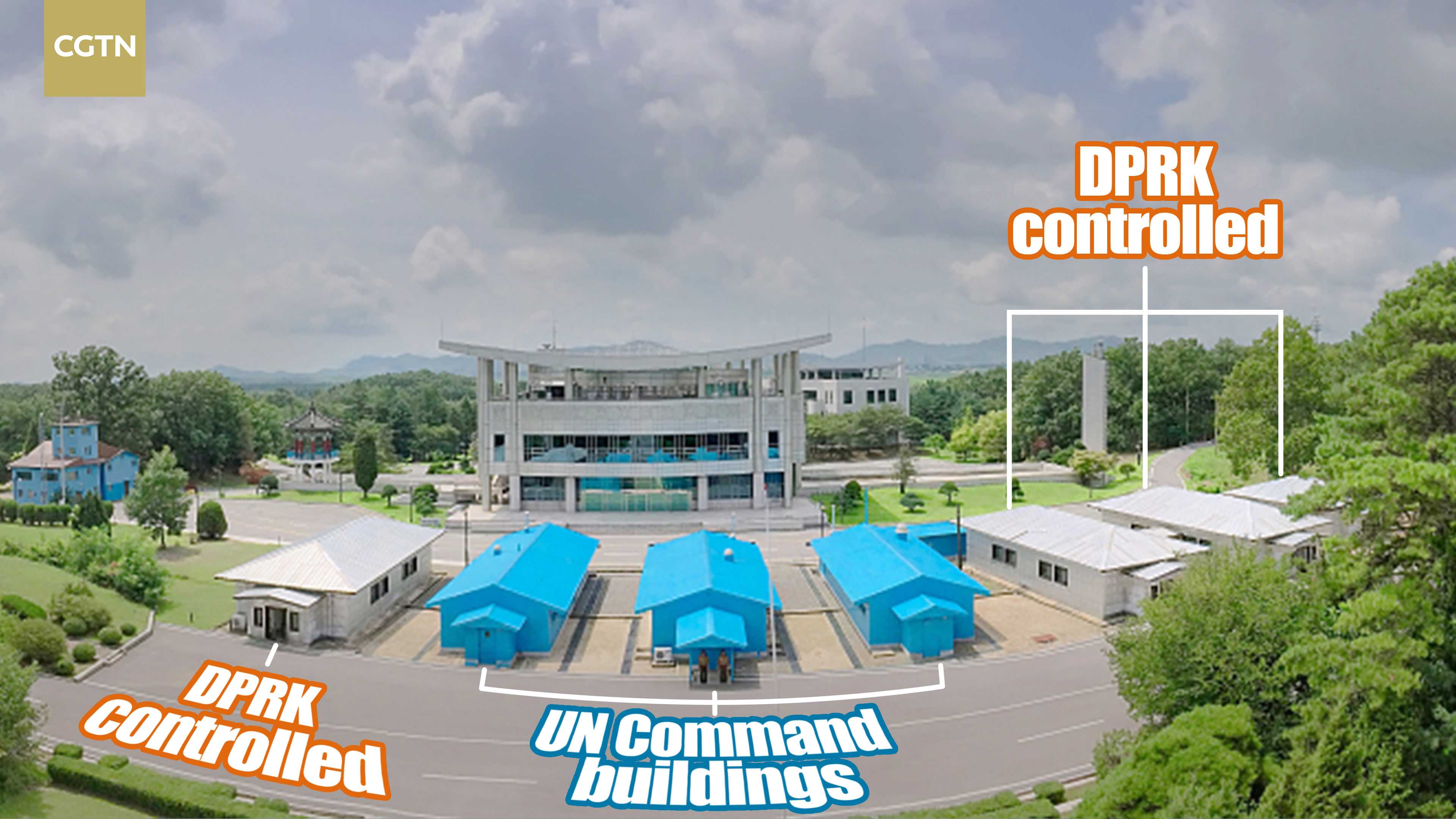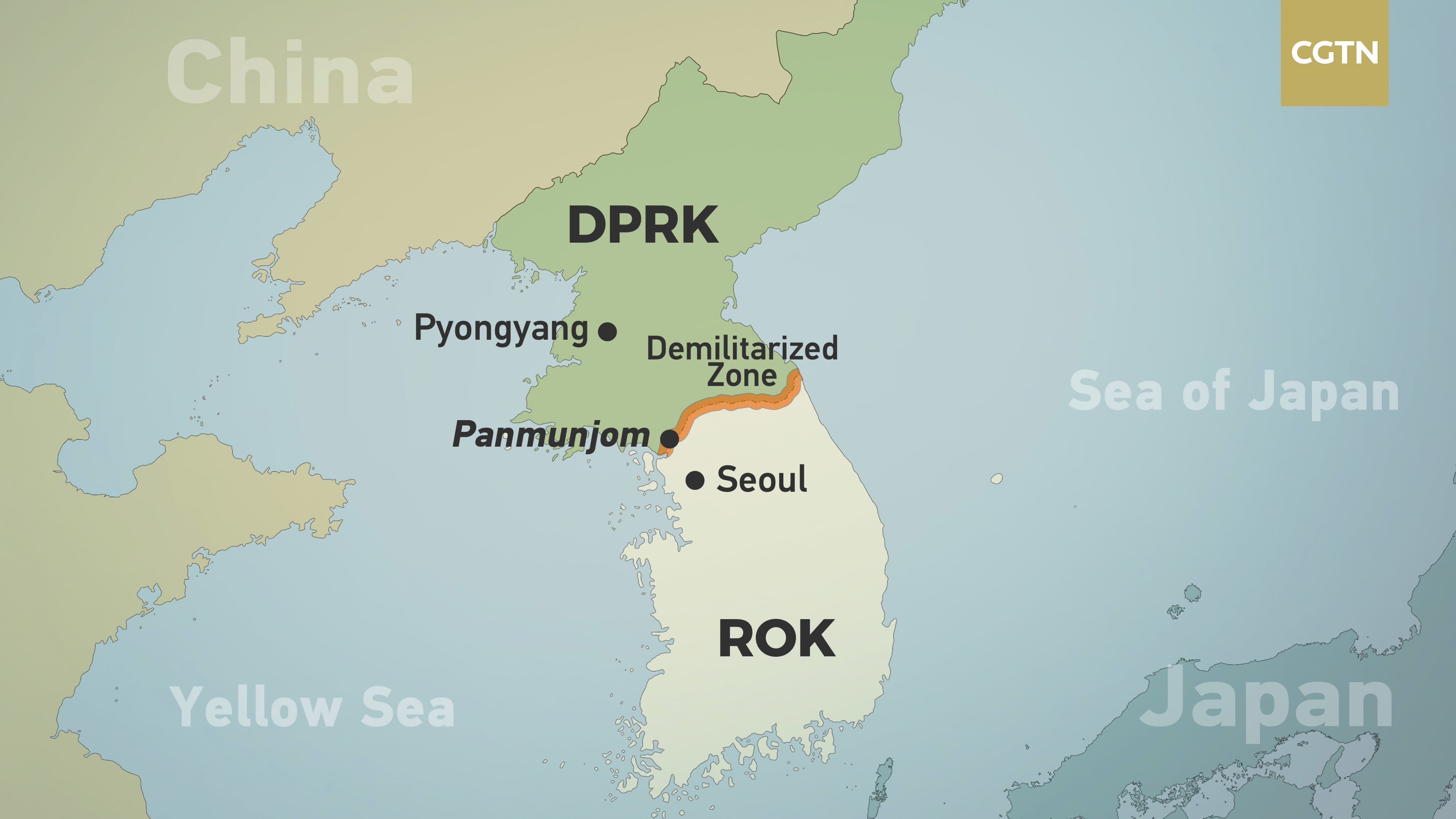Pyongyang agreed to hold official talks with Seoul on Tuesday at the border truce village of Panmunjom, amid a standoff over the nuclear and missile programs of the Democratic People's Republic of Korea. The last time the two countries on the Korean Peninsula in official talks was in December 2015.
The two sides are expected to discuss the DPRK's possible participation in the Winter Olympics to be held in the Republic of Korea (ROK) next month, and inter-Korean relations, South Korean Unification Ministry said.
The truce village has been used as the venue for military talks, Red Cross talks and tourism between the DPRK and ROK.
Panmunjom, about 55 kilometers north of Seoul (an hour and a half bus ride), is considered one of the last vestiges of the Cold War. The village straddles in the 248-kilometer-long Demilitarized Zone (DMZ), a four-kilometers-wide buffer area that runs along the heavily armed military border.
The border was framed by a truce signed at Panmunjom that suspended the 1950-53 Korea War.
A look at past talks between the two Koreas – the Republic of Korea and the Democratic People's Republic of Korea – at the world's most fortified border provides a historical context to the volatility of the Korean Peninsula.
February 2011
The two Koreas opened a military talk three months after Pyongyang unleashed an artillery barrage on Yeonpyeong Island killing four. The military incident that killed two ROK marines and two civilians, was seen as the most serious single military incident since the end of the war. It destroyed dozens of homes and injured another 18 people, and quickly escalated tension in the Korean Peninsula.
The two sides opened a two-day fresh talk in Panmunjom aiming to restart international aid-for-disarmament talks, but the ROK said the talks collapsed, as the two sides failed to agree on conditions for their next meeting.
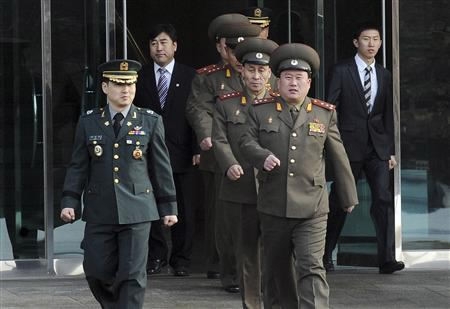
DPRK Colonel Ri Son Kwon and other officers walk south of Panmunjom, Feb. 8, 2011, before their talks with ROK officers. /Reuters Photo
DPRK Colonel Ri Son Kwon and other officers walk south of Panmunjom, Feb. 8, 2011, before their talks with ROK officers. /Reuters Photo
June 2013
The ROK and the DPRK held their first official talks for over two years, seeking to set up a ministerial-level meeting in Seoul amid tension and threats of nuclear war. The dialogue was ahead of hoped-for ministerial talks to ease the hostility, which has escalated after DPRK's nuclear tests and long-range missile launches. The delegates discussed the agenda for an upcoming ministerial meeting and date in Seoul.
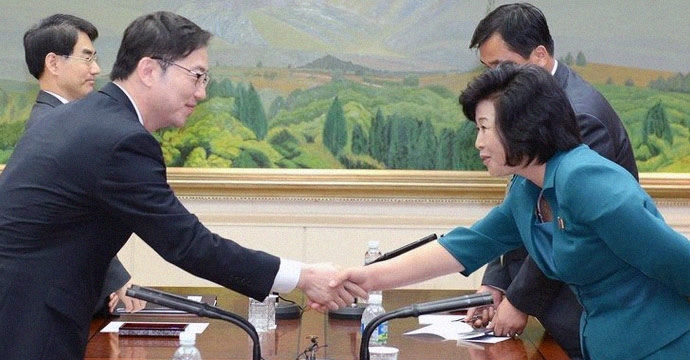
Kim Song Hae (R) met a delegation from the Ministry of Unification on June 9, 2013. /Yonhap Photo
Kim Song Hae (R) met a delegation from the Ministry of Unification on June 9, 2013. /Yonhap Photo
August 2013
Officials from both sides agreed to hold a round of family reunions allowing 100 people from each side to meet their relatives from the other side at the Diamond Mountain resort in the DPRK in September and November. The bilateral talks were seen as a sign of improving ties.
February 2014
Officials from both sides held a high-level meeting at the North’s request, exploring ways to ease the tension. Two rounds of meetings took place at Panmunjom. It was the highest-level meeting since 2007. ROK's Deputy National Security Adviser Kim Kyou-hyun led Seoul's delegation, while Won Tong Yon, a senior official in inter-Korean ties led Pyongyang's delegation.
Little details were given about the meeting. Reuters citing a ROK official reported delegations met with no-prearranged agenda and discussed a range of issues including reunions of families separated during the Korean War.
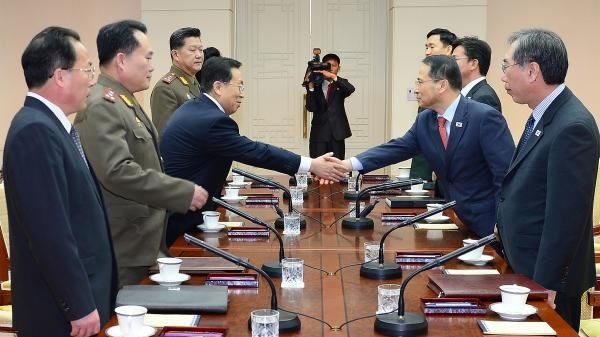
Kim Kyou-Hyun, the head of ROK’s delegation shake hands with his north counterpart Won Tong Yon in Panmunjom, Feb. 12, 2014. /Ministry of Unification Photo
Kim Kyou-Hyun, the head of ROK’s delegation shake hands with his north counterpart Won Tong Yon in Panmunjom, Feb. 12, 2014. /Ministry of Unification Photo
October 2014
The two Koreas held their first high-level military talk in seven years, but Seoul said they failed to reach an agreement on pending issues such as inter-Korean clashes near the western maritime border.
In March, patrol boats from the two sides briefly exchanged artillery fire across the western maritime border after a DPRK naval vessel staged a fire drill that sent artillery shells and crossed the Northern Limit Line (NLL), the de facto maritime border in the Yellow Sea. The move also prompted the evacuation of islanders from the ROK.
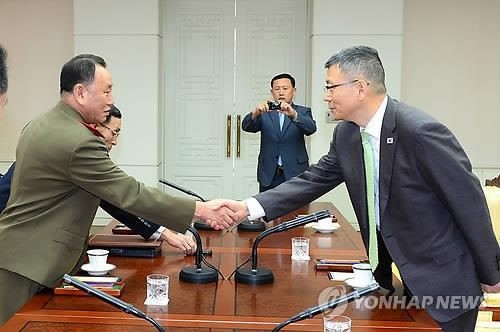
DPRK’s general Kim Yong Chol met ROK’s general Ryu Je-seung at Panmunjom, Oct. 15, 2014. /Yonhap Photo
DPRK’s general Kim Yong Chol met ROK’s general Ryu Je-seung at Panmunjom, Oct. 15, 2014. /Yonhap Photo
August 2015
Aides to leaders of both sides held talks at Panmunjom, raising hopes for an end to a standoff that put the two the rivals on the brink of armed conflict.
Five days ahead of the meeting, the two sides exchanged artillery fire following a series of escalations.
The ROK blamed the DPRK for a landmine explosion in the DMZ earlier in August, wounding two soldiers. Days after Seoul began anti-DPRK propaganda. Pyongyang demanded the ROK to cease the provocative acts. The DPRK fired four shells into the ROK's waters, and the ROK returned 29 artillery rounds.
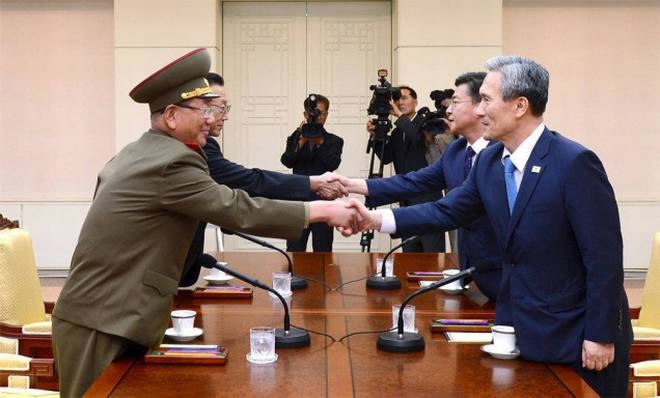
Officials from two sides shake hands during the high-level talks at Panmunjom inside the DMZ, Aug. 25, 2015. /AP Photo
Officials from two sides shake hands during the high-level talks at Panmunjom inside the DMZ, Aug. 25, 2015. /AP Photo
The envoys reportedly held discussions on how to resolve recent tensions and improve ties.
November 2015
Officials from both sides met again in November and agreed to hold talks at the vice-ministerial level on December 11 at the Kaesong industrial park, aiming to improve bilateral ties. The Kaesong industrial complex is located inside the DPRK. Launched in 2004, it is one of the few remaining symbols of cooperation between the two nations.
US presidential visits
US presidents and other top officials have often traveled to Panmunjom at times of heightened tension on the Korean Peninsula. President Donald Trump attempted to make a surprise visit to the armed border during his first Asian visit in November. Analysts say a presidential visit to the DMZ would send a strong signal to the DPRK.
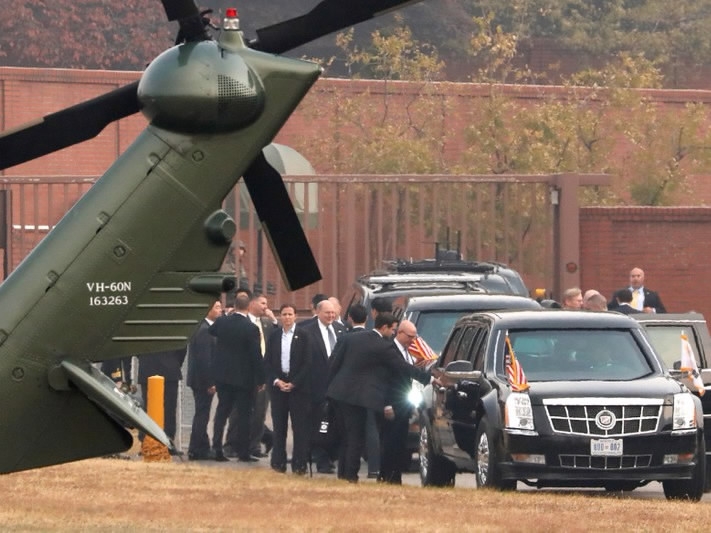
President Trump grounds from visiting the observation post in the DMZ truce village of Panmunjom near Seoul, Nov. 8, 2017. /Reuters Photo
President Trump grounds from visiting the observation post in the DMZ truce village of Panmunjom near Seoul, Nov. 8, 2017. /Reuters Photo
The US has 28,500 soldiers based in the ROK, and the two allies hold regular military exercises, which the DPRK sees as a threat.
Then President Bill Clinton visited Panmunjom when the DPRK's nuclear crisis first flared in 1993.
In 2002, President George W. Bush visited the DMZ, weeks after he called the DPRK part of an "axis of evil."
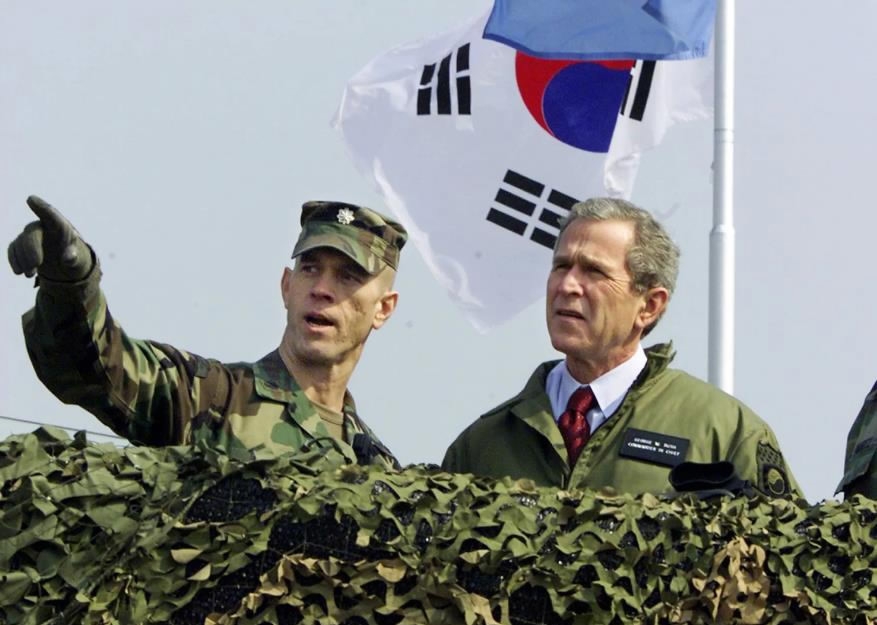
US President George W. Bush visited the DMZ in 2002. /AP Photo
US President George W. Bush visited the DMZ in 2002. /AP Photo
In 2010, US Secretary of State Hillary Clinton and Defense Secretary Robert Gates visited Panmunjom.
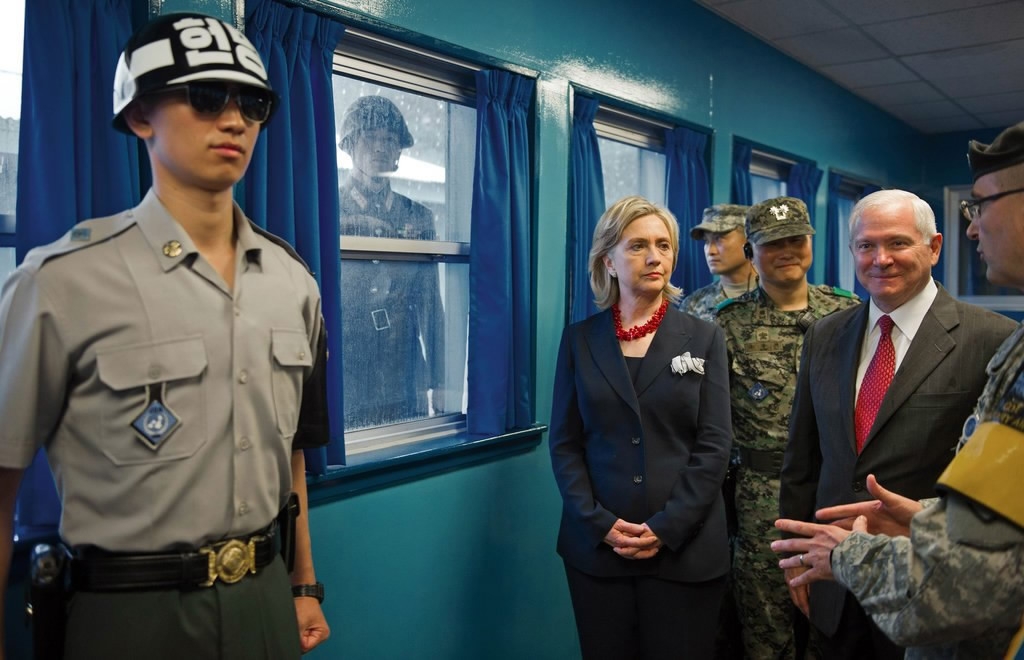
US Secretary of State Hillary Clinton and Secretary of Defense Robert Gates visit the DMZ, Jul. 21, 2010. /Reuters Photo
US Secretary of State Hillary Clinton and Secretary of Defense Robert Gates visit the DMZ, Jul. 21, 2010. /Reuters Photo
In 2012, President Barack Obama visited a frontline US military camp just south of the DMZ.

US President Barack Obama visits military personnel stationed at Observation Post Ouellette along the DMZ between the North and South, Mar. 24, 2012. /Reuters Photo
US President Barack Obama visits military personnel stationed at Observation Post Ouellette along the DMZ between the North and South, Mar. 24, 2012. /Reuters Photo
In March 2017, Secretary of State Rex Tillerson visited Panmunjom. Later in Seoul, he declared that all options, including pre-emptive military action, were on the table regarding Pyongyang.
In April 2017, Vice President Mike Pence visited Panmunjom and later warned the DPRK not to test America's resolve and military power.
In November 2017, President Donald Trump attempted to visit the border but canceled the trip due to poor weather.
(With input from Associated Press)

